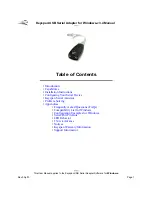
MANOK plus
Use and limits of use
36
Order h49 7144.907-333
radial drilling operation on the workpiece. There is no funda-
mental reason why the clamping head chuck cannot also be
used for other machining tasks such as bypass milling or
plunge-milling. In such cases, the owner must ensure that
the forces and torques that occur are comparable to the
equivalent permitted values for turning or drilling, to check
the reliability of the application.
5.2.5.1 Further to Principle 1:
𝑭
𝒓𝒂𝒅
≥ 𝑭
𝒓𝒂𝒅 𝒆𝒓𝒇
Determining the required clamping force
The following equations are used to determine the required
clamping force
𝐹
𝑟𝑎𝑑 𝑒𝑟𝑓
at rotational speed.
These equations apply to longitudinal turning and to face
turning operations. Drilling operations on the front end of
workpieces can also be calculated. Superimposed, simulta-
neous machining operations, for example by several tools or
turret heads can also be superimposed computationally. In
other words, the required radial clamping forces for individ-
ual machining operations need to be added together.
However, it is rare for axial drilling and turning operations to
be superimposed because their opposing directions of rota-
tion usually preclude them from running simultaneously.
For computational purposes, the calculation should be
based upon the point with the highest forces, that is the least
favorable machining moment. If in doubt, several blade en-
gagement situations need to be checked to record the least
favorable one.
If radial drilling operations are being performed, the required
radial clamping force
𝐹
𝑟𝑎𝑑 𝑒𝑟𝑓
, and especially a check of the
transverse force introduced
𝐹
𝑞
and the resultant torque
𝑀
𝑞
play a central role.
Scatter widths of clamping force
The following table illustrates clamping force scatter width
factor
𝑆
.
The values for the scatter width factor apply if the system is
being operated in accordance with the operating instruc-
tions, that is with regular maintenance and lubrication.
Provided that the radial clamping force is measured using
appropriate measuring equipment before every start-up and
continuously every 100 clamping operations, it is possible to
work with the reduced and 'verified' clamping force scatter
width factor shown here.
















































